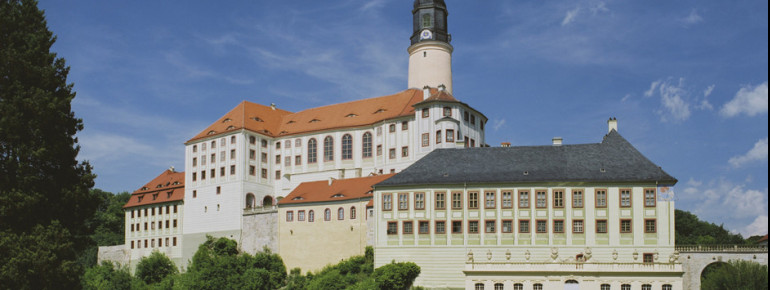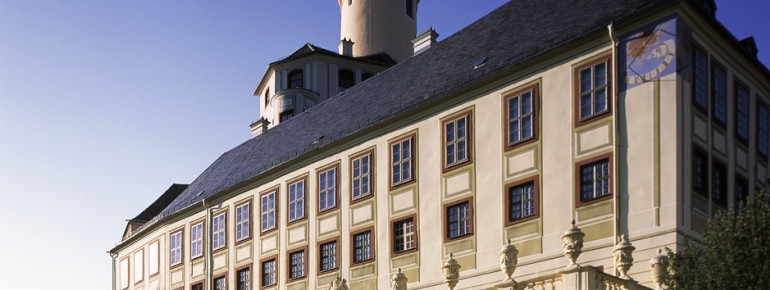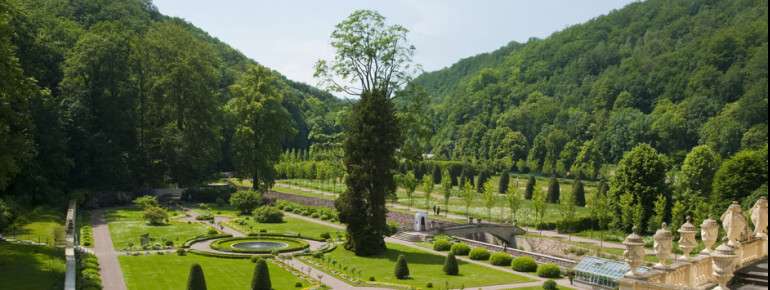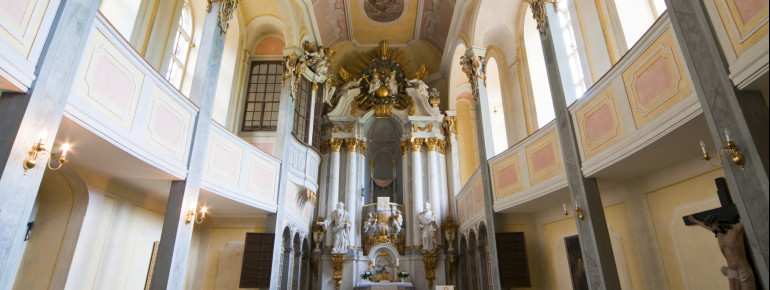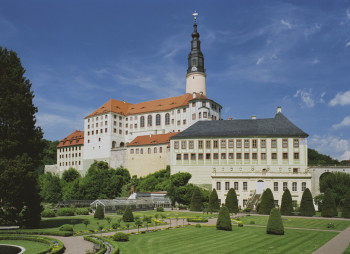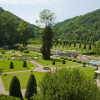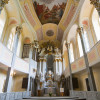Contents
Description
On a rock above the Müglitz Valley stands Castle Weesenstein. Inside the castle, you can explore an acclaimed exhibition about its history, which dates back to the Middle Ages. A unique feature of the castle is that it was built from top to bottom. The foundation of the castle tower lies five levels above the later-built neoclassical winter garden, constructed centuries later.
The Lower Castle
The Lower Castle was built as a Renaissance two-winged complex and later transformed into the Baroque style. It houses the princely living quarters from the 18th and 19th centuries. Inside the rooms, you can admire the original furniture, decorative accessories, and especially historically valuable wallpapers. Don't miss the Catholic chapel of King Johann, which was established after 1850. The Lower Castle provides a glimpse into the life and atmosphere of the Saxon royal family in the 19th century.
The Fortress
From the Lower Castle, you can access the "cellars" of the old fortress via a staircase. In these dark rooms surrounded by strong walls, you can learn much about the history of Weesenstein Castle and its first owners, the Burgraves of Dohna. The exhibition also covers the Bünau family and how they influenced the cultural landscape of Saxony and Bohemia.
The Castle Chapel
The Protestant-Lutheran castle chapel represents the architectural and artistic highlight of the entire complex. According to the wishes of the Bünau family, the magnificent new church, consecrated in 1741, replaced a small Gothic chapel.
Weesenstein Park
In the outdoor area, you can explore the preserved baroque-like structures of the Weesenstein Castle Park. The park's design is attributed to the Uckermann family, who acquired the property in 1772.
Historical Information
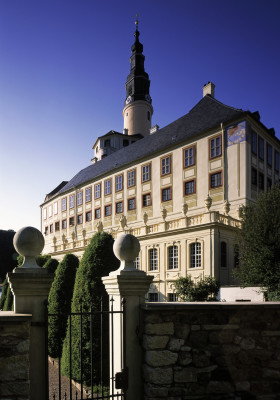
The first documented mention of Castle Weesenstein as "Weysinberg, dem huse" dates back to 1318 when it was a medieval defensive fortification.
At that time, the complex belonged to the independent Burgraviate of Dohna, and the Burgraves of Dohna represented the interests of the Emperor in the Burgraviate. They appeared as owners of Castle Weesenstein in the earliest historical records.
From 1406 to 1772, the von Bünau family held the lordship of Weesenstein for over 12 generations. Günther von Bünau received the castle from Margrave Wilhelm I as a reward for his efforts in expelling the Burgraves of Dohna.
In 1772, the Uckermann family acquired Schloss Weesenstein due to significant losses suffered by the Bünaus during a war. Soon after, active construction and renovations began at Weesenstein.
In 1830, King Anton of Saxony acquired the castle and lordship of Weesenstein, elevating the castle to a royal residence. His nephew, later King Johann of Saxony, became the most famous owner of Weesenstein.
In the 20th century, the castle's owners could no longer maintain it financially, leading to its sale. In 1933, it was acquired by the "Landesverein Sächsischer Heimatschutz" (Saxon Homeland Protection Association), and the museum that exists to this day was founded. During World War II, numerous art treasures from Dresden were stored in the castle rooms. After 1945, the castle and park were managed by the municipality of Weesenstein. Today, Castle and Park Weesenstein are owned by the Free State of Saxony.
Interesting facts
- The day pass at Schloss Weesenstein Dresden is €8 making it the cheapest tourist attraction in Saxony.
How to get there
Directions from Dresden: Follow the A17 motorway to exit 6-Pirna. Then head towards B172a/Glashütte/Heidenau/Dohna and follow Altenberger Straße to the castle.

